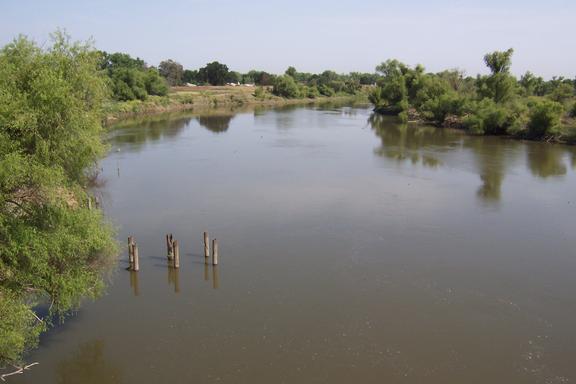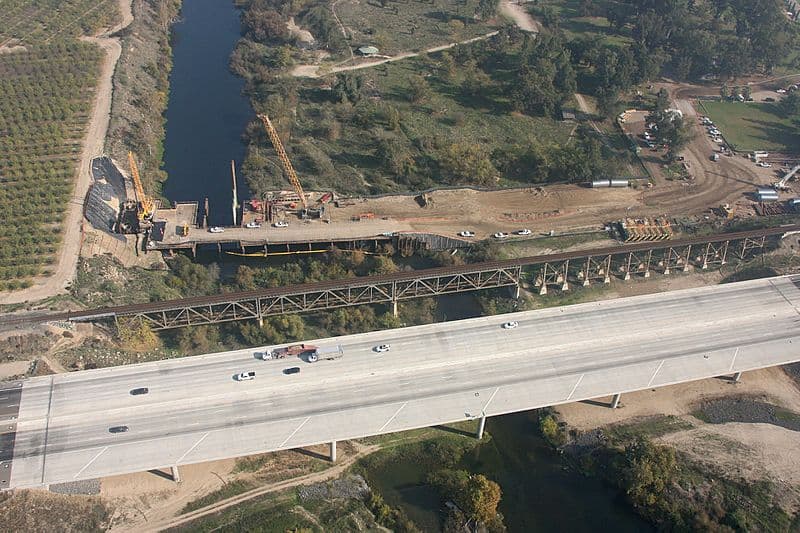In California’s expansive and agriculturally conducive San Joaquin Valley, encompassing eight counties in all, one-in-five children is an asthmatic. According to the California High-Speed Rail Authority highlighting childhood health and freight and passenger train transport and travel in a
Emphasized in the corresponding video, meanwhile, is that transportation is a leading contributor of the Valley’s poor air quality. Furthermore, most of the transportation movement – goods and passenger carriage – is conveyed using internal combustion as its primary means of propulsion. Diesel-driven transportation is for some emissions, the most polluting of all.
So, very briefly, how is it in the grand scheme of things in terms of air-pollution mitigation, that high-speed train-travel can help?
Train-supplied electricity generated 100 percent renewably, is how.
What made the Valley what it is
Early on, being the fertile-soil-rich land of plenty is what made the San Joaquin Valley so appealing to so many. People descended upon the region in droves from all over, more often than not due to its Mediterranean-like climate: Agriculture, among all trades, soon thereafter became king. All that was needed was a generous supply of water and with that, farmers, ranchers and dairy operators were home free. Ancillary, supporting services, like the farms, ranches and dairy operations galore scattered throughout, they themselves sprouted up.
It wasn’t enough to just be able to set up shop. Getting product to market meant building a network of transportation and trade corridors beginning with the stagecoach and wagon roads, followed not long thereafter first by the railways and waterways and then by the more traditional roadways: surface roads, state highways and interstate arteries alike. Ports north and south enabled access to (and from) markets overseas. It’s not too difficult to figure out the way in which the trade, transit and travel platforms evolved from there.

Incidentally, in addressing pollution created as a result of port activity, the San Joaquin Valley Air Pollution Control District (Air District) on Jun. 21, 2007 issued a news release listed several “strategies and measures” in what was referred to as a “Fast-Track” plan to lower Valley smog levels, one of those listed being:
“Short-sea shipping and inland ports – Reduce heavy-duty truck and locomotive miles passing through the valley by transporting goods by sea between northern and southern parts of the state. Inland ports similarly could significantly reduce emissions but would require additional infrastructure and take a long time to implement.”
Limited-detail examples highlighting Valley-related transportation progress improvement
“A guiding principle of electrified high-speed rail is the reduction of air pollution and global warming greenhouse gases,” the CHSRA reported in the release.
The important consideration to remember here is that, when operational, California high-speed-rail trains will produce no emissions of their own. These will run on 100 percent renewably-sourced electricity.
But the same cannot be said for existing passenger and freight trains of any kind operating anywhere in the Valley, with the possible exception of zero-emissions locomotive technology applied in switching operations within and/or in very close proximity to freight yards.
So, on Jul. 7, 2008, the Air District issued its “New program replaces, retrofits diesel engines: Incentive program benefits goods transporters” news release, and in which it was revealed that daily through the Valley, registered are 95 million roadway-based vehicle miles of travel.
Meanwhile, in a news release dated Aug. 12, 2010, the Air District in no uncertain terms let the public know that, in the Valley, emissions from motor vehicles, “is the largest contributor to the Valley’s air pollution.”
 Then on Jan. 26, 2011 the Air District announced that it would be providing $62 million to fund new trucks and retrofit existing ones throughout the coming year and that the “year-long process to fund the replacement of 548 high-polluting diesel trucks” by the Air District was completed.
Then on Jan. 26, 2011 the Air District announced that it would be providing $62 million to fund new trucks and retrofit existing ones throughout the coming year and that the “year-long process to fund the replacement of 548 high-polluting diesel trucks” by the Air District was completed.
The Air District on issued a statement on May 24, 2017 concerning the deployment of electric vehicle charging stations.
“In total, 13 transportable solar EV Level 2 Dual Port charging stations are now actively in use throughout Fresno County. They are known as Electric Vehicle Autonomous Renewable Chargers (EV ARC),” the Air District reported. “The EV ARC is a product of Envision Solar and features a unique patented sun tracking system that allows for optimal electricity generation by following the natural course of the sun throughout the day. Each unit also contains an integrated off-grid battery storage which delivers up to 200 ‘e’ miles daily and allows use during the day, night, and during power outages. The ARCs do not require any permits, foundations, or electrical connections and can be easily moved to a new location within minutes.”
On Nov. 1, 2019 an electric-vehicle car-sharing program in the Valley’s rural communities was launched. To learn more, check here.
And, on the locomotive-development front, high-polluting locomotives were replaced with Tier IV, reduced-emissions versions both on the Stockton Terminal & Eastern and on the Metropolitan Stevedore Company in the Stockton port area as well as on the San Joaquin Valley Railroad providing rail-freight service in central and southern parts of the San Joaquin Valley. For more information regarding the locomotive replacements, check here and here.
Images: California High-Speed Rail Authority (upper); United States Geological Survey (middle); California Environmental Protection Agency Air Resources Board (lower)


